Ask Ethan: why don't we have a telescope without mirrors or lenses?
- Transfer
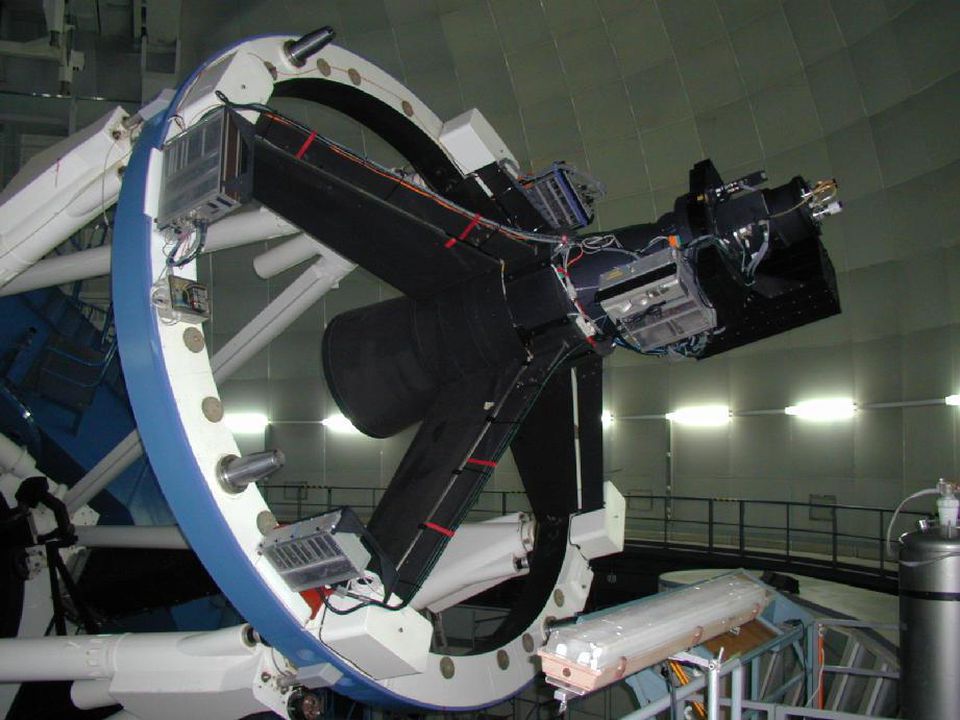
Placing the CCD in the main focus of a telescope or observatory is a great way to get excellent images; similar technology has been used for more than 100 years. But is it possible to use only one CCD matrix, without mirrors or lenses?
For hundreds of years, the principle of using a telescope was the simplest of the simplest: to create a lens or mirror to collect a large amount of light, focus it on a detector (an eye, a photographic plate, an electronic device), and see something that lies far beyond the capabilities of the naked eye. Over time, the lenses and mirrors became larger in diameter and were made with ever-increasing accuracy, and the detectors reached the level at which they were able to assemble and use each incoming photon. The quality of the detectors can make you think about why we need lenses at all! This is what our reader asks:
Why do we need lenses and mirrors to create a telescope, if we have CCD sensors? Why, instead of making a 10-meter mirror or a lens focusing the light on a small sensor, don't make a 10-meter sensor?
The question is very tricky, because if you could do this, it would make a revolution.

Comparison of the sizes of mirrors of various existing and proposed telescopes. When the Giant Magellan Telescope starts working , it will become the largest in the world, and the first in the class of optical telescopes with a diameter of more than 25 m; subsequently, it must be surpassed by the European extremely large telescope . But all of these telescopes have mirrors.
It doesn't matter how well our surface reflects, how accurately we polish and polish our lenses, how evenly and carefully we apply the coating, and how well we repel and destroy dust - no mirror or lens will ever be 100% optically perfect. A certain amount of light will be lost at each step and with each reflection. Considering that the modern largest telescope schemes require multistage mirrors, including a large hole in the main mirror, providing a good location for reflecting light, there are inherent limitations in the scheme for collecting information about the Universe using mirrors and lenses.
The goal is clear and beautiful: remove unnecessary steps, eliminate any loss of light. This idea may seem simple, and since CCD sensors are becoming more common and cheaper, it may be used in future astronomy. But the realization of such a dream will not be very simple, because there are very important obstacles in its path that must be overcome in order to get a telescope without mirrors or lenses. Let's go over them.
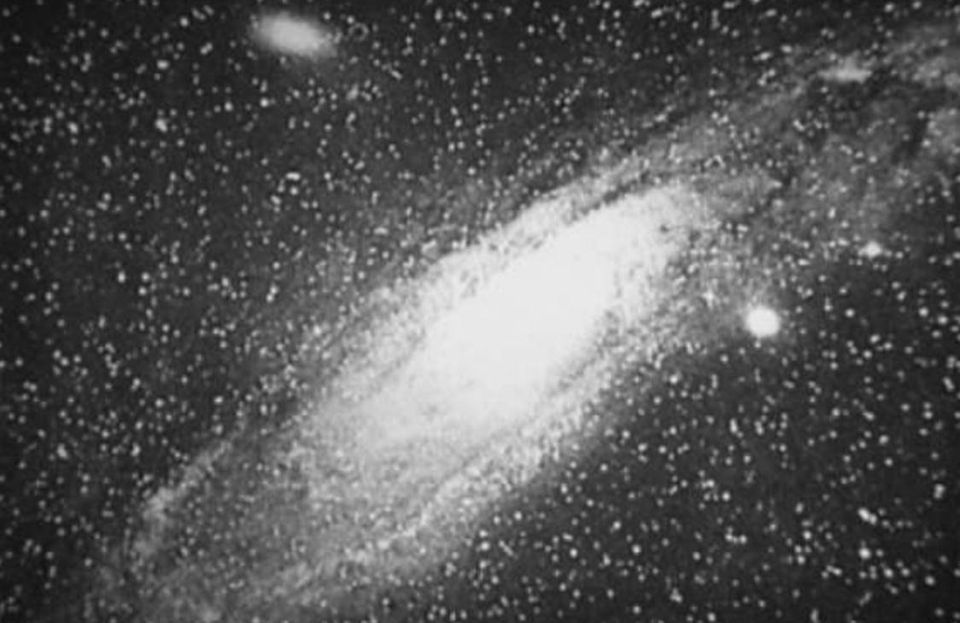
The 1887 image of the Andromeda nebula for the first time demonstrated the structure of the spiral arms of the nearest large galaxy to the Milky Way. It is completely white due to the fact that the photo was taken without the use of filters - instead of taking a photo through a red, green and blue filter, and then combine these colors.
1) CCDs measure light very well, but they do not sort or filter wavelengths. You did not think about why all the old photos of stars and galaxies are made in black and white, despite the fact that the stars and galaxies themselves have certain colors? This is because they did not collect light by separate filters for different wavelengths. Even modern telescopes have a filter between the incoming light and the CCD / camera to aim at a specific wavelength or set of wavelengths, make several images with several filters, and then recreate the image in true colors or in false ones. Andromeda Galaxy (M31), taken from a ground-based telescope through several filters, after which a color portrait was created from these photographs
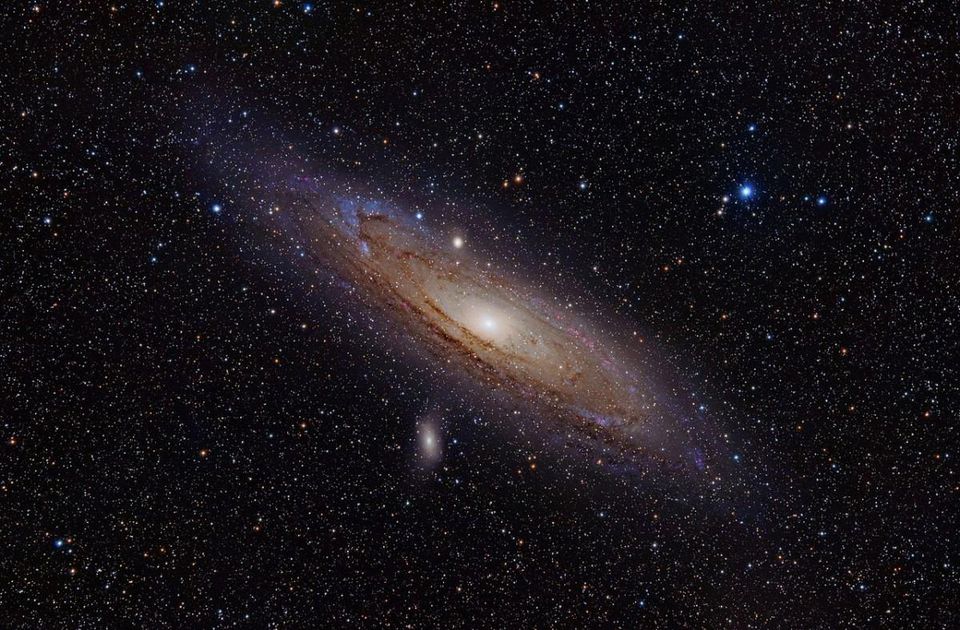
This can be avoided by creating a complete set of filters for each individual element of the CCD, but the design will be cumbersome, expensive and will require that these filters be located somewhere behind the elements of the CCD, since you need to maintain the fullness of the light collection section, which would normally occupy a mirror or lenses looking at the sky. This is not an insurmountable obstacle, but we have no solutions for this problem at the present time.
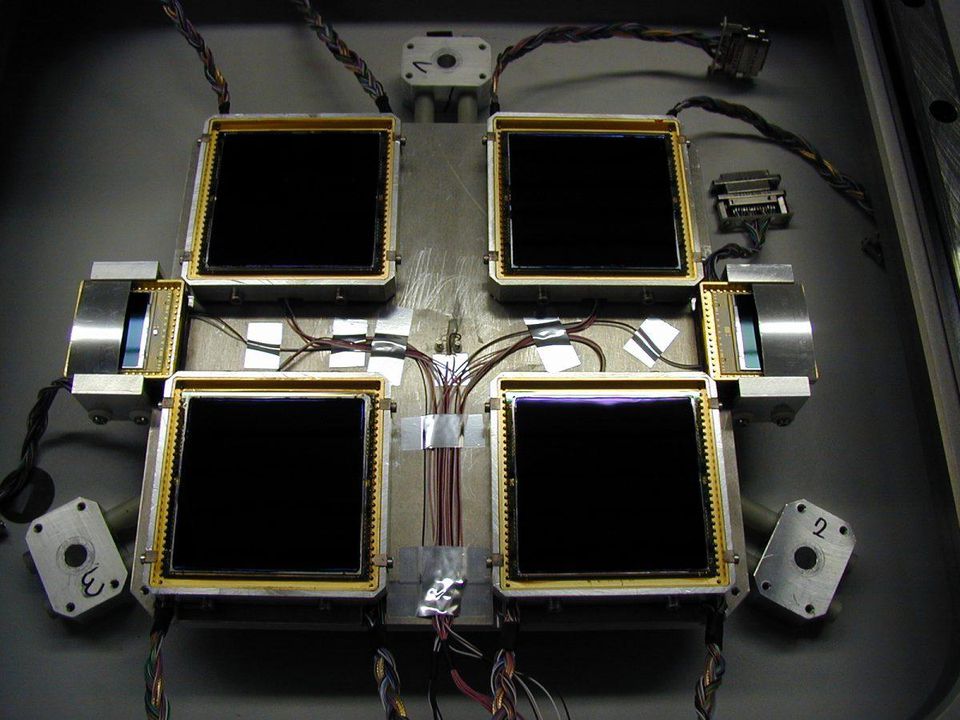
Large area CCDs are extremely useful for collecting and detecting light, and for maximizing the benefits of each individual incoming photon. But without a mirror or lenses that pre-focus the light, the omnidirectional nature of the CCD will not be able to produce a meaningful image of the observed object.
2) The CCD does not measure the direction of the incoming light. To obtain meaningful images that go so well with telescopes, they need to measure not only the intensity and wavelength of the incoming light, but also its direction. Lenses and mirrors have a remarkable property - the light coming from an extremely remote source, perpendicular to the plane of the mirror, is focused so that it enters the camera / photographic plate / CCD, and the light from other directions does not get there. For a separate CCD, this is not the case: it registers light from any direction. If you do not reduce the rays into a beam, do not focus the light in advance, you will simply see a bright white sky in all directions - no information about the direction of light will be stored there. Equipment operation scheme
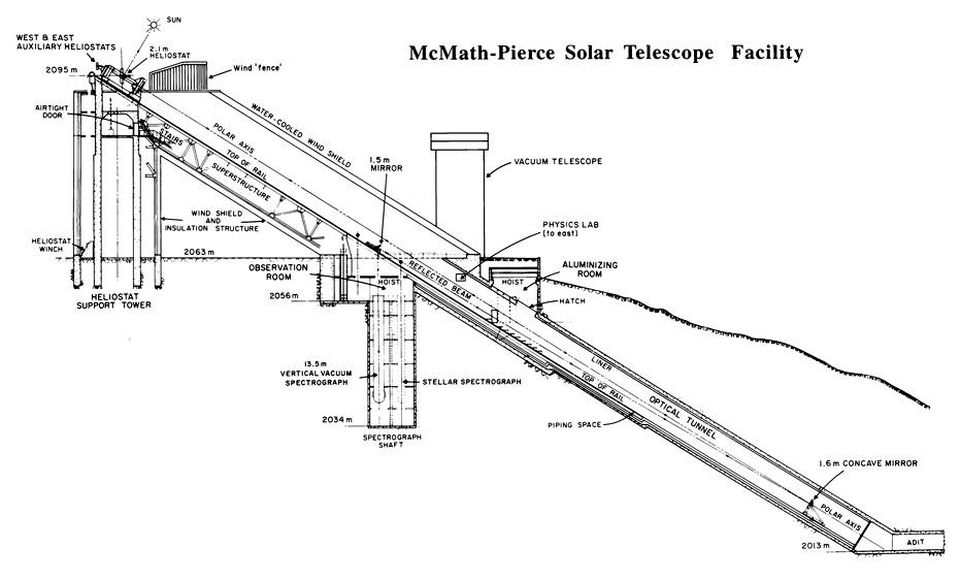
the McMas-Pierce solar telescope , a telescope with the longest optical tunnel in the world. Even he ultimately needs a mirror for high-quality images.
You might think that a solution to this problem would be to build an extremely long, opaque tube perpendicular to the plane of the CCD matrix, but this is also a problem: without lenses and mirrors, the light of everything that is in sight will fall on every pixel of your matrix. Even the longest mine ever built for this purpose, the MacMas-Pierce solar telescope [mine length 220 m / approx. transl.], you still need a mirror or lenses to focus the light. This is the biggest problem in using a CCD sensor alone to measure light, and the most basic reason you need to equip it with a mirror or lens.

The photo taken at the Astrium factory in Toulouse shows a set of 106 CCDs that make up the focal plane of the Gaia telescope. CCDs are bolted to their supporting structure (CSS). CSS (gray plate under a CCD) weighs about 20 kg and is made of silicon carbide (SiC), a material with remarkable thermal and mechanical stability. Dimensions of the plane: 1 × 0.5 m
3) CCDs are too expensive for them to cover a circle with a diameter of 10 meters. CCDs alone are expensive; An advanced 12 megapixel CCD, with pixels (and microlenses covering them) 3.1 microns across, is priced at $ 3,700 . To cover an area equivalent to a 10-meter mirror by them, 700,000 matrices would be required: such a cost approaches an unacceptable $ 3 billion. For comparison, the European extremely large telescope with a main mirror with a diameter of 39 meters together with the entire observatory and equipmentestimated at € 1083 million - less than half of the first amount.
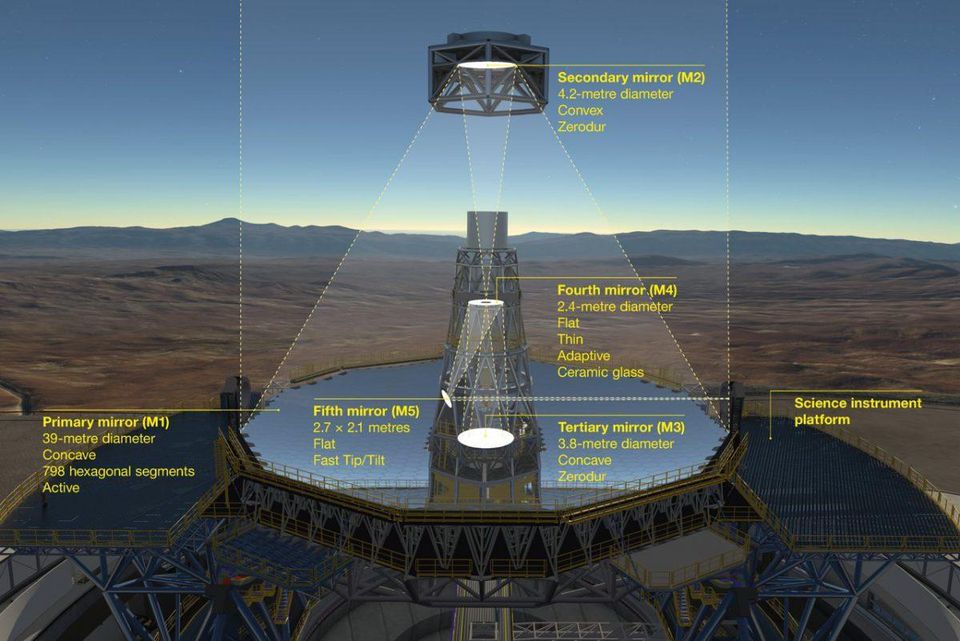
The diagram shows the latest system of five mirrors of the European extremely large telescope. Before you get to the scientific instruments, the light is first reflected from a giant concave composite mirror 39 m in diameter (M1), then reflected from two 4-meter mirrors, convex (M2) and concave (M3). The last two mirrors (M4 and M5) form an integrated adaptive optical system for obtaining extremely sharp images on the final focal plane.
The additional amount of light coming into a CCD without mirrors would be tiny, because at each reflection we lose about 5-10% of the light, but going from 10 m to 39 m diameter of the mirror we increase the amount of light by 1500% ( one thousand five hundred percent)! Simply put, you can spend money much better if your goal is to collect more light and increase resolution.
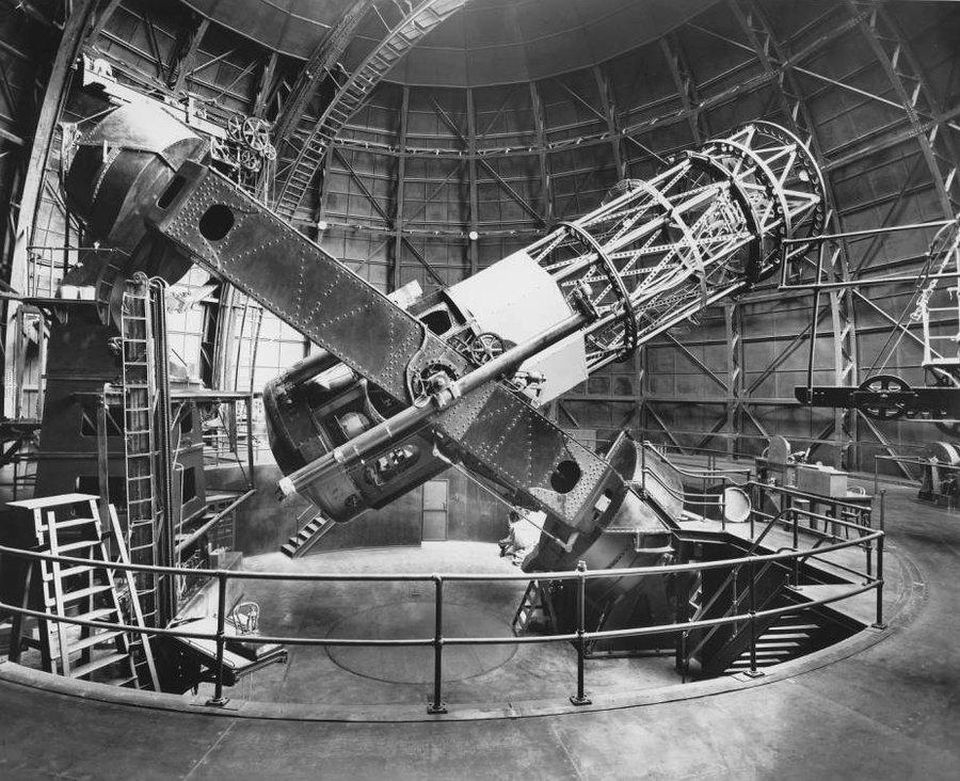
On the ground, large and massive telescopes usually pose no problems as long as the shape of the mirrors is kept ideal for reflecting light. But in space, the launch cost is determined by size and weight, so each small saving is worth a lot
4) If you want to save on weight, there is a better solution. The Hubble Space Telescope was incredibly difficult to launch and deploy, not only because of its size, but also because of its weight. The severity of the main mirror was one of the biggest obstacles to the mission. But with James Webb's telescope, the area that collects light will be seven times larger than that of Hubble, and it will even weigh less than half of its larger predecessor. What's the secret? Cast the mirror, shape it, polish it - and then drill out the material from the back .
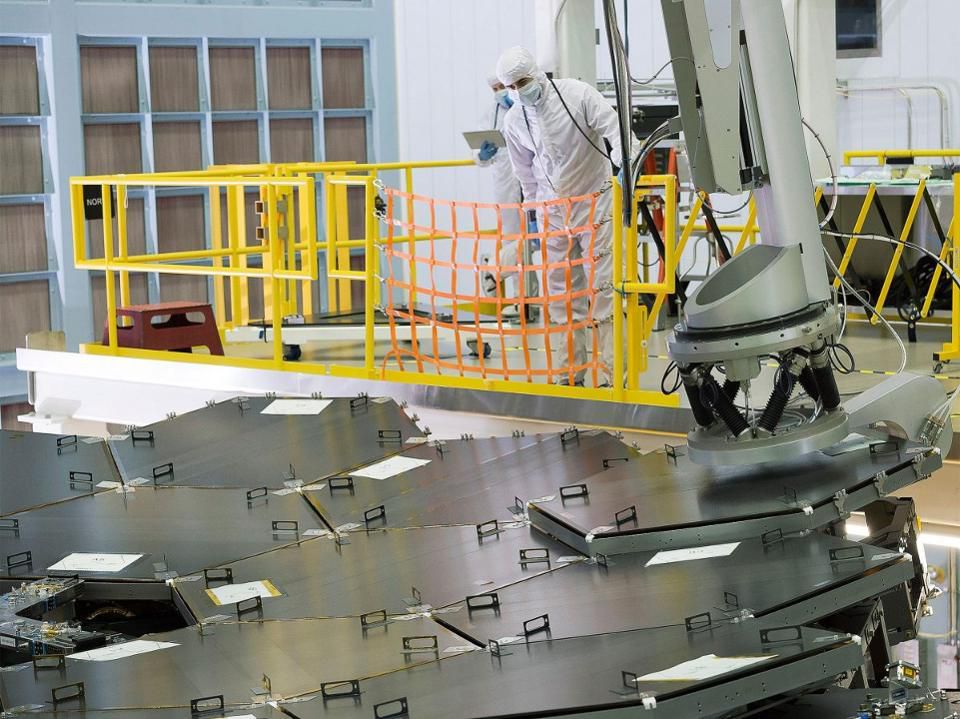
Installation of the last, 18th segment of the main mirror of the telescope of James Webb. Dark covers protect the gilded segments of the mirrors, with 92% of the original material removed from the back of them.
There is no need to fight with gravity in space, therefore special structural strength is not required to support the telescope. After each of the 18 segments of the James Webb telescope was fabricated, 92% of the initial mass was drilled from the back of the telescope, which allowed keeping the shape of the front part of the mirror and drastically saving on weight.
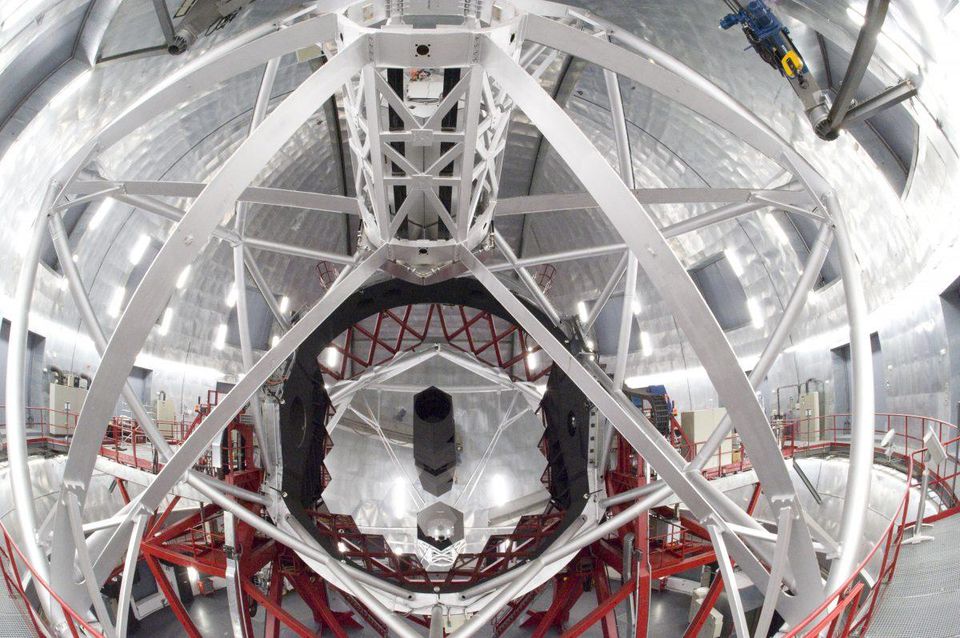
The insides and main mirror of the Big Canary Telescope, the owner of the largest mirror in the world (10.4 m)
There are many reasons why it would be possible to build a telescope without lenses or mirrors — optimization in weight, cost, materials, light gathering power, image quality, resolution in any case will require some kind of compromise. But the fact that CCDs cannot independently measure the direction of the incoming light is a big problem for creating a mirrorless telescope. Although each mirror surface from which light is reflected leads to its partial loss, mirrors remain the best way to obtain images of the Universe with high resolution, excellent quality, with a large area of light gathering and relatively low cost. If the cost of a CCD will fall, if it will be possible to build a grid the size of a telescope's mirror, and also it will be possible to measure the direction of the incoming light in real time, then it will be possible to talk about something. But it is not foreseen the replacement of optical science. More than 300 years after the first publication of the revolutionary treatise on the nature of light, Newton's rule in creating separate telescopes has not been won yet!
Ethan Siegel - astrophysicist, popularizer of science, blog Starts With A Bang! He wrote the books Beyond The Galaxy , and Treknologiya: Star Trek Science [ Treknology ].
FAQ: if the universe is expanding, why aren't we expanding ; why the age of the universe does not coincide with the radius of the observed part of it
